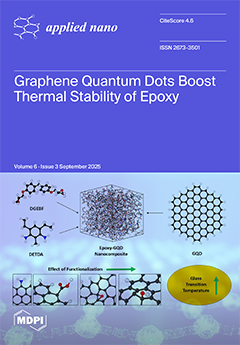Esophageal squamous cell carcinoma (ESCC) accounts for the majority of esophageal cancers worldwide, with a poor prognosis and increasing resistance to conventional treatments. Faced with these limitations, nanoparticles (NPs) are attracting growing interest as innovative therapeutic agents capable of improving specificity and efficacy and reducing systemic toxicity. This study critically examines the pharmacological effects, mechanisms of action, and toxicity profiles of different metallic or organic nanoparticles tested on ESCC cell lines. Preferred Reporting Items for Systematic reviews and Meta-Analyses (PRISMA) 2020 guidelines were followed by a meticulous literature search of Google Scholar, Web of Science, PubMed/Medline, and Scopus databases to achieve this goal. The results show that the anti-tumor properties vary according to the type of nanoparticle (copper(II) oxide (CuO), silver (Ag), gold (Au), nickel(II) oxide (NiO), nano-curcumin, etc.), the synthesis method (chemical vs. green), and the biological activity assessment method (3-(4,5-dimethylthiazol-2-yl)-2,5-diphenyltetrazolium bromide (MTT), Bromodeoxyuridine (BrdU), Cell Counting Kit-8 (CCK8) assays, etc.). NPs derived from green synthesis, such as those based on
Moringa oleifera,
Photinia glabra, or pomegranate bark, exhibit moderate cytotoxic activity (50% inhibitory concentration (IC
50) between 92 and 500 µg/mL) but show good tolerance on normal cells. In contrast, chemically synthesized NPs, such as Cu(II) complexes with 1,3,5-benzenetricarboxylic acid (H
3btc) or 1,2,4-triazole (Htrz), show lower IC
50 (34–86 µM), indicating more marked cytotoxicity towards cancer cells, although data on their toxicity are sometimes lacking. In addition, multifunctional nanoparticles, such as gold-based nano-conjugates targeting Cluster of Differentiation 271 (CD271) or systems combined with doxorubicin, show remarkable activity with IC
50 below 3 µM and enhanced tumor selectivity, positioning them among the most promising candidates for future clinical application against ESCC. The most frequently observed mechanisms of action include induction of apoptosis (↑caspases, ↑p53, ↓Bcl-2), oxidative stress, and inhibition of proliferation. In conclusion, this work identifies several promising nanoparticles (silver nanoparticles derived from
Photinia glabra (PG), gold-based nano-immunoconjugates targeting CD271, and silver–doxorubicin complexes) for future pharmaceutical exploitation against ESCC. However, major limitations remain, such as the lack of methodological standardization, insufficient in vivo and clinical studies, and poor industrial transposability. Future prospects include the development of multifunctional nanocomposites, the integration of biomarkers for personalized targeting, and long-term toxicological assessment.
Full article




